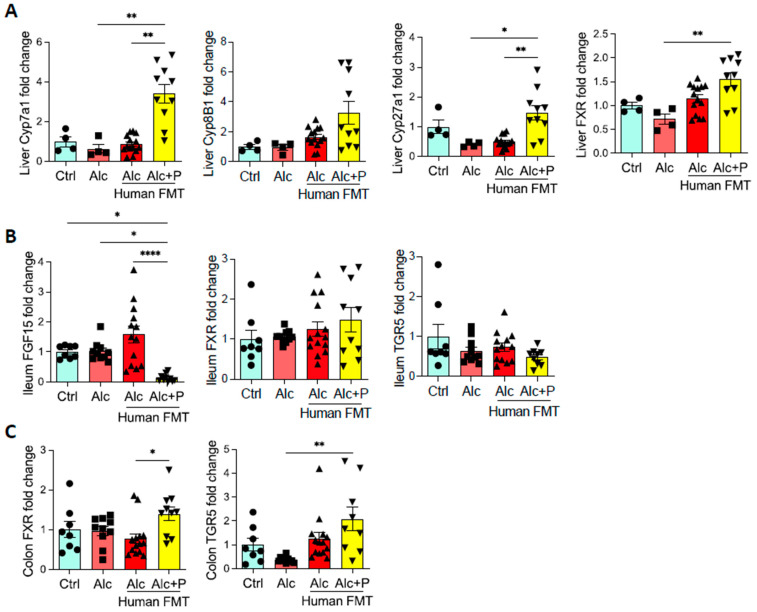Figure 7.
Bile acid (BA) signaling. Control (Ctrl) and alcohol-fed (Alc) mice received a Lieber DeCarli diet with isocaloric maltodextrin or alcohol, respectively. Pectin-treated mice (Alc + p) received 6.5% pectin in addition to 5% ethanol. Human fecal microbiota transfer (FMT) groups received the microbiota of a patient with alcoholic hepatitis. Quantification of the mRNA levels of enzymes involved in liver BA synthesis (Cholesterol 7 alpha-hydroxylase, Cyp7a1; Sterol 12-alpha-hydroxylase, Cyp8b1; sterol 27-hydroxylase, Cyp27a1; Farnesoid X receptor, FXR) (A), ileal BA signaling (fibroblast growth factor 15, FGF15, FXR, G protein-coupled bile acid receptor 1, TGR5) (B), and colon BA signaling (FXR, TGR5) (C) by qPCR. * p < 0.05, ** p < 0.01, **** p < 0.0001.

